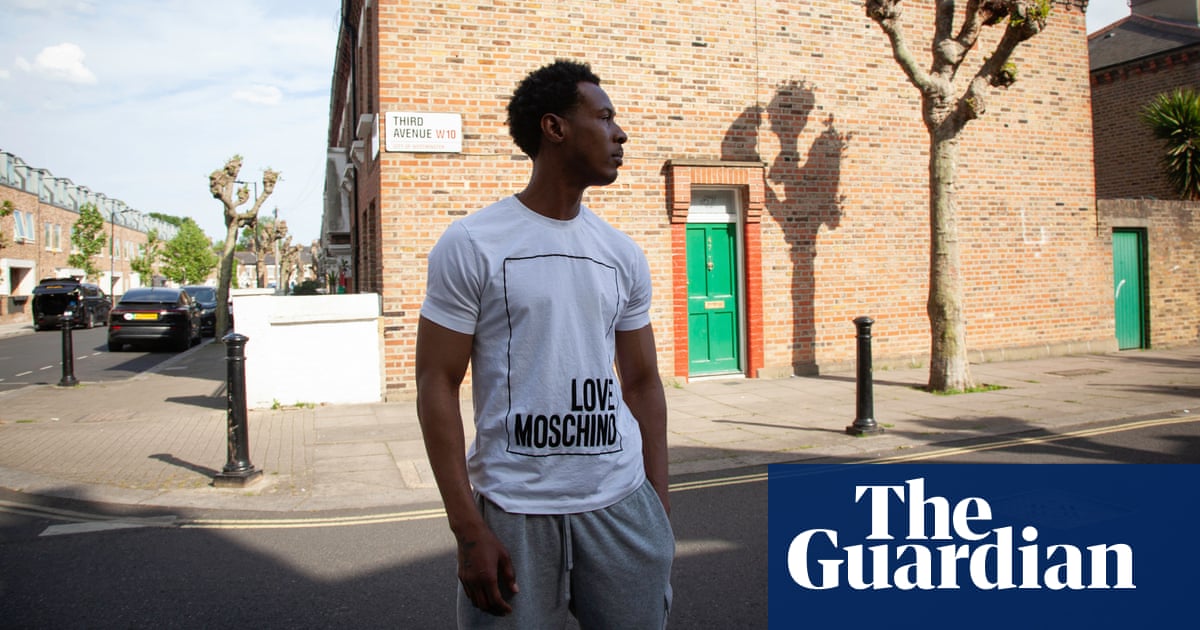While mentoring underprivileged youth at north London’s Arsenal Football Club in 2016, I noticed regular and alarming newspaper reports about the deaths of local young men in knife-related stabbings and high levels of male suicide.
I talked to the young men about childhood issues, such as absent fathers, gangs, childhood poverty, a dearth of male role models and mental health issues. Existential issues relating to the “growing pains” of becoming an adult in challenging inner-city London was a common theme. And so the project Young Men, Worst Fears was born.
It seemed that the question “what is your worst fear” ignited their imagination and caused them to drop their guard. It was as if they were unravelling. They were vocalising their frustrations without inhibition and welcomed the chance to communicate their truth.
“Taken almost 10 years ago, aged 17, my biggest fear then is not necessarily what I fear most now. I chose ‘isolation’, but I really meant to say ‘loneliness’ – I think I was too afraid to admit that at the time. Being alone was my greatest fear. Growing up gay, I remember watching my friends kiss at house parties and feeling undesirable. I worried I would never meet someone and would always be alone.”
Born and raised in north west London, Alex was an A-level student at the time the image was taken, and is now a personal shopper at Jacquemus, New Bond Street.
“When looking back at my past fear of death I realise that it wasn’t necessarily the death I was afraid of, but the idea of leaving behind your loved ones and what you currently have in your life, as well as the uncertainty and unknown of what actually happens when we die. But why be scared of the future when you can be in the present moment and excited for what good holds for the future.”
Deujean is the founder of Harrow Road Soup Kitchen, and lives in Queen’s Park on the Mozart Estate. The kitchen offers mentoring, outreach and events in the community. Deujean organises a Back to School drive, giving clothes to children in the area so they have the things they need.
Stazzy is an artist, born Philip Stasopoullos in Cyprus and raised in Archway, Islington.
“At the time of the photo I said my biggest fear was failure and that hasn’t changed. However, almost a decade later, my idea of success has.
“I was young, and naive. Since the photo, I believe I’ve learned a lot from life experiences and I’m a much wiser and better person.
“Having lost my father, I feel a greater responsibility for my family, and success to me now is ensuring the most comfortable life possible for them and myself. Failure isn’t just a fear any more, it’s not even an option.”
Ahmed Masoud is a Palestinian and British writer, theatre maker, and academic based in London. He has created a number of dance shows and three plays: Go to Gaza, Drink the Sea, Walaa and The Shroud Maker. He has also authored two novels: Vanished: The Mysterious Disappearance of Mustafa Ouda and Come What May.
Jay is 19, and works as a model. “Coming from the south side of London I have seen a lot of people who have put in a lot of groundwork and now they are somewhat nonexistent.”
London-based artist Kenan Kián crafts emotionally charged hyperpop/electronic music. Camden was their old stomping ground. Their work reflects a journey from adversity to empowerment, resonating with those who feel underestimated.
“The fear of not having my music pushed me to create what I couldn’t live without. My new EP “VILLAIN ERA”, with themes of perception, is a timeless homage of that.”
Zephryn Taitte is a London based actor, of British Guyanese heritage. He has acted in theatre productions such as Talawa’s ‘The Crucible’ and London Bubble’s Sirens of Titan. He is mostly known for his role in the independent web and TV series Brothers With No Game, for which he received an industry nod and became Screen Nation’s ‘favourite actor’ award winner.
Gabriel Speechly, born and raised in north west London, works in entertainment.
Now Kaci is 25 years old and says: “we’ve become too old so we have created our own [football] sessions with the help of Arsenal In the Community, run and mentored by Jack Ironside.” Kaci adds: “Jack at Arsenal has given me everything.”
Micah grew up in Battersea and Brixton, south London. He set up The Community Giveback scheme with Isaac, a community events company, organising events such as fireworks, an Easter egg hunt and Back to School drives.
We met through theWembley2Sowetoinitiative. Josh grew up on the Elthorne Estate in Archway. “Because of several government cuts numerous youth clubs were shut down across London – that left loads of young people hanging around the streets which led to antisocial behaviour and gang involvement. Some of us took it amongst ourselves to inspire them and to provide local youth club involvement to shift the life of current and future criminality i.e. young kids involved in crime.”
